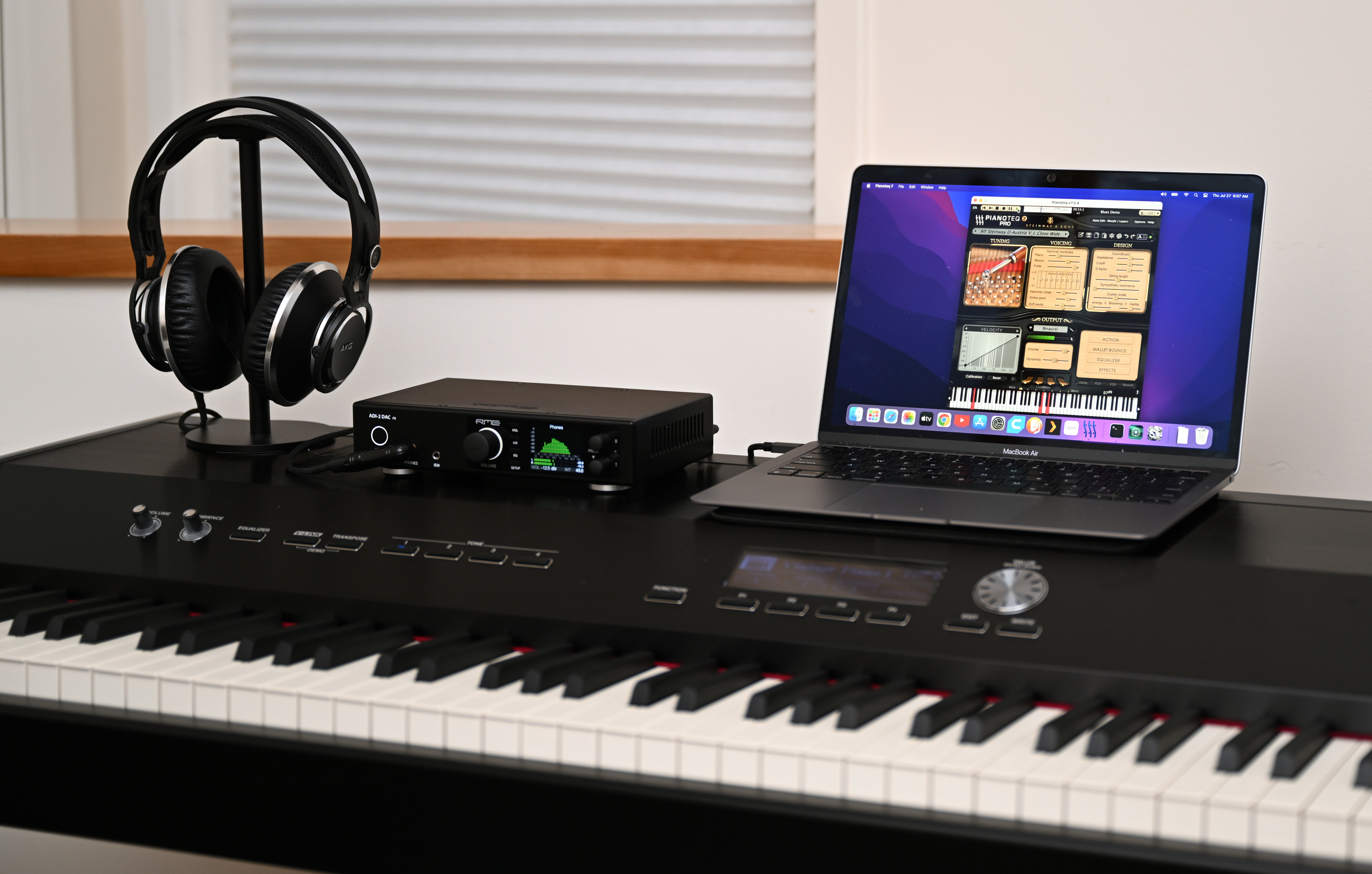Topic: Playing a gig through iOS Pianoteq
I recently played my first gig using Pianoteq 8 on an iOS device. Here's a summary of the experience, and a couple issues I ran into (not flaws with Pianoteq).
I play an Arturia Keylab 88 Mk2, with a scarlett focusrite 2i4 interface. Pianoteq was installed on a standard (i.e. cheapest) 10 in. iPad from several years ago.
I was running and testing this setup the night before and it worked perfectly.
The gig was outdoors at a music festival, temp. about 88 degrees. We were playing under a canopy for shade.
We are a jazz quintet. Our group was set to play as soon as another band, set up next to ours, stopped. We had no opportunity for a sound check of any type.
If we had done any sound check, I could have avoided the first problem.
We started the first song, and I immediately realized my piano was not in tune with the rest of the band. It was around a half step low. I don't think it was exactly a half step low because I tried to transpose my playing and it still was a little off. I had to stop playing the first tune and let the band go on without me. This was pretty much a disaster IMO, as I've never had my rig fail me like that on a gig.
In the moment, I couldn't remember how to check all the midi and tuning sections (I don't normally transpose or change tunings). I now realize I needed to go into options, global midi settings, and check the small transpose box at the bottom. Also bring up the Tuning section of the main settings screen and check that it hadn't been inadvertently set to something other than A440. But I was so flustered I couldn't find those things on the iPad, and couldn't spend time looking up the manual. I needed to at least fix the problem before we started the next tune.
I tried closing and restarting Pianoteq. Same results. I was contemplating rebooting the iPad, which might have taken too long.
So finally I went to my backup plan--my iPhone 12 pro. I had installed Pianoteq on my iPhone, but not tried it with my keyboard. I hooked the phone up to the audio interface, selected the audio interface in the settings/midi section, and it worked! I was playing before the first tune had even ended.
I played the rest of the gig on the iPhone. Adjusting the settings was a little harder due to the small screen--but I didn't need to do much other than switch keyboards. I had set up my iPad to switch pianos when I pressed certain buttons--and I had not done the same on my iPhone. So I had to manually select the keyboard I wanted (mostly just switching between acoustic and electric piano).
Everything went well until the last tune--our closer.
The sun had gone lower in the sky and was now shining directly on the iPhone, causing it to heat up. The phone had some alert on the screen which I couldn't really read due to the sun's glare (and I was playing music at the time). The sound started cutting out, and making an awful sound through the PA. I played a jazz solo with the sound randomly cutting out and coming back every 10 seconds or so, it was terrible. I tried turning the phone over but the connector I had wasn't long enough to allow me to move it into shade.
Afterward, the phone basically shut down, it just said "I'm too hot" and you couldn't use it until it cooled down.
If I'd been using my old keyboard with built-in sounds I wouldn't have had any of these issues. I'm still on the fence about gigging with a computer-based sound setup. Since the Arturia Keylab is a controller only and does not have built-in sounds, I couldn't switch to those as a fallback.
Afterward the tuning problem with the iPad had gone away, and I have not been able to figure out what happened. I am pretty sure it is not a fault of the software--maybe I had inadvertently changed something, or some midi signal had done it. I will now always check the tuning before a gig.
And I realize I need to ensure that the iOS device (or laptop) stays out of the sun when playing outside.
I love Pianoteq and love that I could carry a backup in my pocket, thanks to the iOS versions. They really work great on any device I have. I could have even switched to my other iPad (a 12.9 in. iPad pro, which I use for my sheet music) if the phone didn't work out--it also has Pianoteq installed. So I have two backup systems.
I hope this helps someone.

